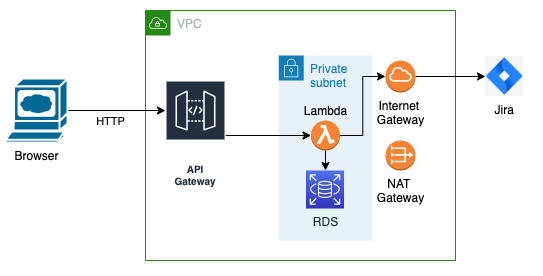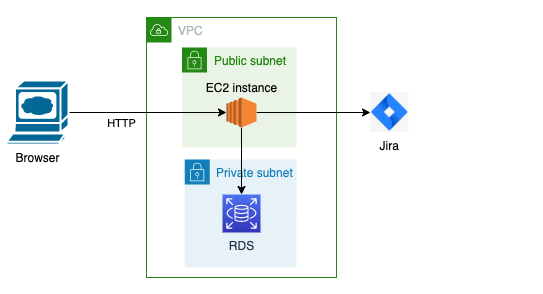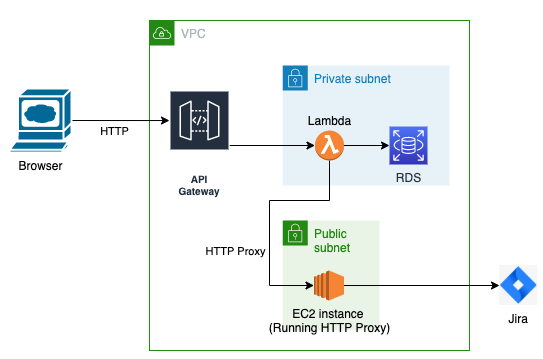Background 🔗
Agile principles and strategies such as Lean Startup outline how important it is when developing a new product to get user engagement and feedback early and often. To this end, during the early stages of ovalview.io, we wanted to prove the concept with a very simple [MVP](https://en.wikipedia.org/wiki/Minimum_viable_product#:~:text=A minimum viable product (MVP,and (ultimately) unnecessary work.). We needed the quickest and most cost effective way to stand up a backend service that exposed a REST API so that we could allow interested parties to use the app and provide feedback. This article documents the approach we used and some lessons learned for future ventures.
Iteration 1 🔗
On the surface, FaaS (Function as a Service) using AWS Lambda seemed like a good candidate for this; only pay for what you use and no servers to think about.
We created our API using NodeJS, the Serverless framework and AWS Cognito for authentication; this allowed us to get a secure, working application quickly. Serverless made deployments simple and it was costing us very little in terms of minimum AWS monthly cost.
Estimated minimum monthly cost:
- API Gateway, Lambda, Cognito, Cloudfront, Route53: Negligible
- RDS: ~$20
- Total: ~$20 per month

Iteration 2 🔗
The jump in cost came when our service needed to make HTTP calls to the outside world, in this case to update Jira; an important proposition in Ovalview.
Making outbound HTTP calls from a Lambda attached to a VPC (needed for RDS access) requires a NAT Gateway. NAT Gateways are surprisingly pricey in AWS and all of a sudden our minimum AWS bill per month had tripled to over $65 a month.
Estimated minimum monthly cost:
- API Gateway, Lambda, Cognito, Cloudfront, Route53: Negligible
- RDS: ~$20
- NAT Gateway: ~$45
- Total: ~$65 per month

A more cost effective alternative? 🔗
On reflection, although not an architecture that is advisable for any long term product, for our initial prototype, we could have just run a small EC2 instance in a public subnet which would have avoided the need for a NAT Gateway and therefore been significantly cheaper.
Estimated minimum monthly cost:
- Cognito, Cloudfront, Route53: Negligible
- RDS: ~$20
- EC2 instance: ~$5
- Total: ~$25 per month

A Hybrid solution 🔗
One of the trade-offs with the single EC2 instance approach above is the scalability afforded by using Lambdas. A possible, but more involved alternative, would be to continue using the Lambdas but configure the code to use a HTTP proxy sitting inside a public subnet as per the diagram below. The EC2 instance would need to have one of the following:
- a HTTP proxy service using something like TinyProxy as documented here
- Networking configuration to make it act like a NAT Gateway
Estimated minimum monthly cost:
- As above
- Total: ~$25 per month

Conclusion 🔗
This article proposes 2 methods to avoid incurring the expense of using a NAT Gateway for projects that are in their infancy, where the goal is a low cost method to demonstrate an idea and gain quick feedback. Once the proposition was deemed to have value, work would then need to be done to create a scalable, resilient architecture, following industry best practices.
A note on pricing estimates:
- Accurate as at time of writing (Feb, 2022)
- Based on eu-west-2 (London). Tax at 20% (UK VAT)
- Leveraging ‘always free’ tier of Lambda, Cognito & Cloudfront
- Based on services running for a whole month (730 hours in an average month)
- Lambda / API Gateway pricing (effectively free for our initial usage)
- Cognito pricing (effectively free for our initial usage)
- RDS pricing. Based on a Postgres db.t3.micro instance @$0.021 per hour (plus some storage costs)
- NAT Gateway pricing @$0.05 per hour
- EC2 pricing. Based on a t3.nano instance @$0.0052 per hour


